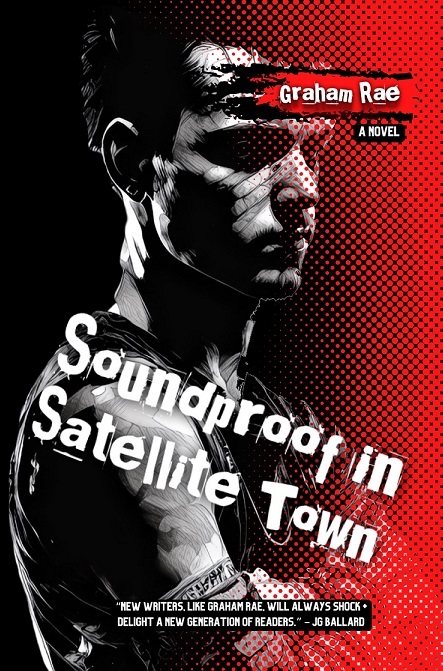
We’re pleased to publish an excerpt from Graham Rae’s novel Soundproof in Satellite Town, set in a futuristic version of Scotland. For more on the book, here’s the publisher’s description:
Soundproof in Satellite Town is a new Scottish sorta-futuristic novel set in the 22nd century, published by Anxiety Press. In it, Johnny Certex and Ratsoup, two disenfranchised young men, have a mad, fast, weird last weekend of drugs, booze, digigames, sex, and muzak, before starting their manufactured jobs on Monday morning, In this excerpt from the book, the two youngstars go to visit their teknofreak friend Eddie Arcadian, who has a strange friend visiting…







